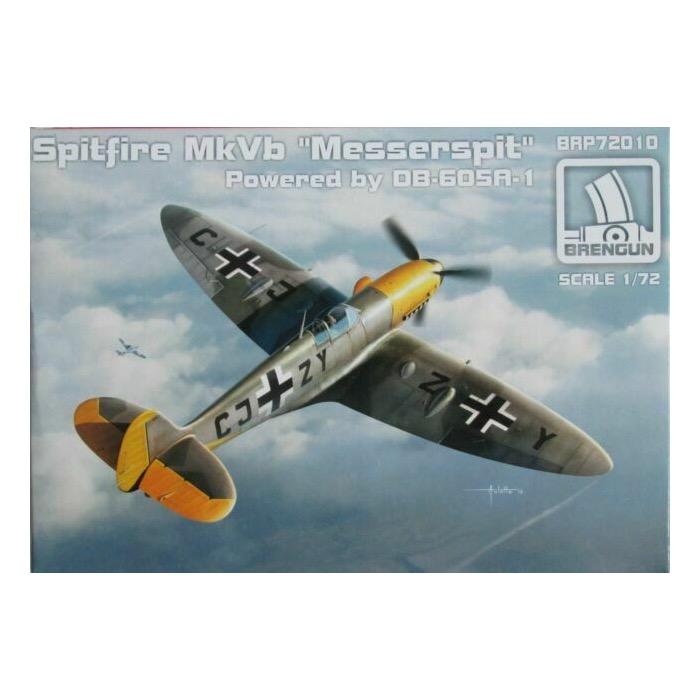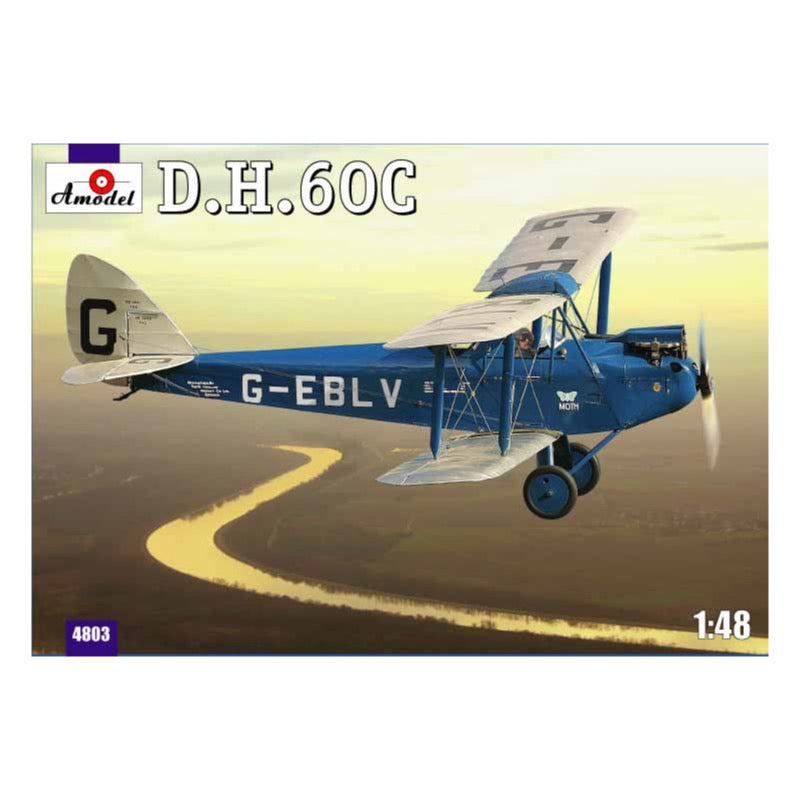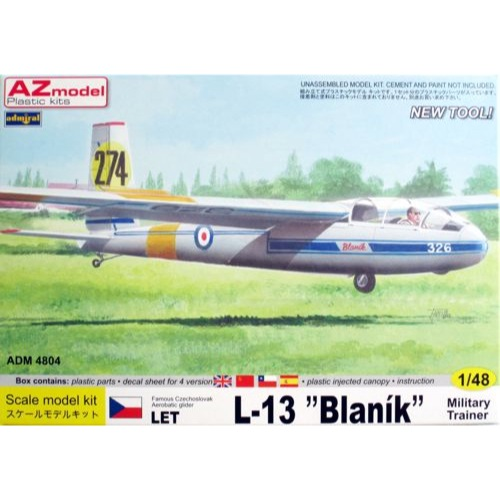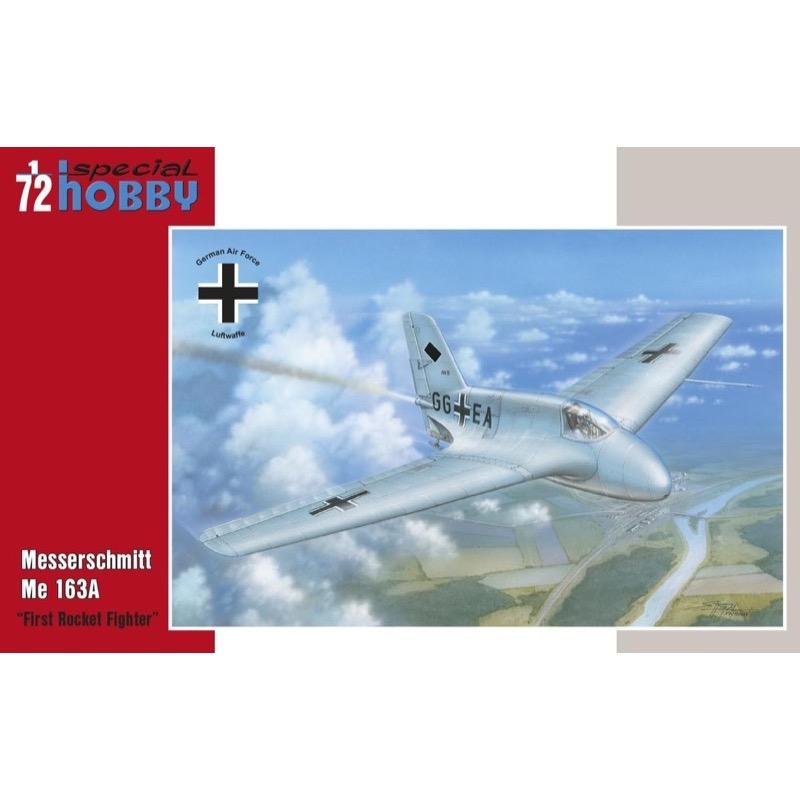
Special Hobby SH72334 1/72 Messerschmitt Me 163A
11.00
$
<p>High quality, precision plastic model kit. Paint and glue not included. Requires assembly and painting. For intermediate to advanced skill modellers.</p>
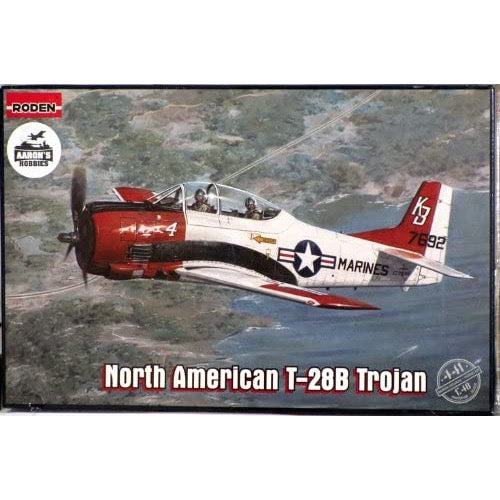
Roden 441 1/48 North American T-28B Trojan
25.00
$
<p>Training airplanes in the air forces of any country have always played a very important role. Before being entrusted with combat machines, beginner pilots must pass an obligatory flight test on a trainer to acquire the theoretical skills learnt in the classroom. Quite often, two-seat versions of ordinary fighting machines have been used for this, when future fighter pilots are being prepared for example. However, as a rule, initial flights have been conducted in purpose-built basic trainers.</p>
<p>In the history of America's air arms one of the most epoch-making machines of this class was North American's T-6 Texan, designed before the beginning of WWII and produced in a quantity of more than 15 thousand units. This machine was exported to many countries around the world, and its service lasted until the end of the 1960's. However with the end of the piston-engined era it became clear that a new airplane was needed which could replace the T-6 Texan for basic pilot training. The US Navy had a particular need for a new airplane - the fleet had now become the basis of the country's strategic projected power, and that is why it was necessary to build a machine for the speedy training of the new generation of beginner pilots to co-operate with ships and land an airplane on a carrier deck.</p>
<p>In 1946 the North American firm offered the XSN2J project to the Navy, which had to replace the SNJ (the Navy's name for the T-6). A year later, the Air Force also decided to replace the T-6, and North American quickly modified a prototype to the army specification, becoming the T-28. The first test flights took place in September 1949 and their results more than satisfied the military. North American received an order for 266 machines, designated the T-28A Trojan. The airplane had a classic tandem seating arrangement, a large cockpit with an excellent view, and could carry a variety of ordnance on the pylons under the wings if required. The airplane appeared so successful, that the North American firm soon brought additional manufacturing plants on stream. By the mid 1950's almost 1,200 T-28A's were produced.</p>
<p>Very soon after the acceptance of the T-28A into service the Air Force decided to improve the performance of the plane and install a more powerful engine. In such fashion appeared the T-28B fitted with a 1,425-power Wright Cyclone R-1820-9HD engine. The nose of the fuselage was modified to allow for the installation of a bigger engine, however on the whole the T-28B looked very much like its predecessor. Its flying weight increased slightly, however this did not reduce its performance figures; quite the opposite, they became even better due to the more powerful engine. Over three years the Navy received almost 500 airplanes of the T-28B version. Also, the Air Force began to replace the T-28A with the T-28B.</p>
<p>Apart from the USA, the T-28 was produced under license in France, where it was named the T-28S Fennec. After the end of service in the French Air Force these machines were passed on to various countries, from Morocco to Nicaragua. The Japanese Air Self Defense Force procured a T-28S for tests; however mass production which was planned with the support of the Mitsubishi company was cancelled. Some T-28B's, with provision for armament under the wings, were delivered to the Air Forces of South Vietnam and Thailand as foreign aid.</p>
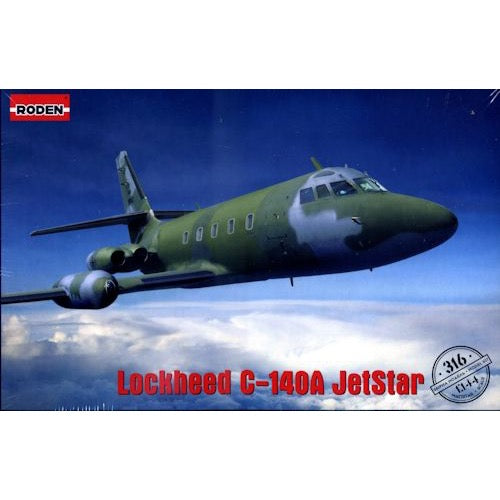
Roden 316 1/144 LHKD C-140A Jetstar
9.00
$
<p>The Lockheed JetStar (company designations L-329 and L-1329; designated C-140 in USAF service) is a business jet produced from the early 1960s to the 1970s. The JetStar was the first dedicated business jet to enter service. It was also one of the largest aircraft in the class for many years, seating ten plus two crew. It is distinguishable from other small jets by its four engines, mounted on the rear of the fuselage in a similar layout to the larger Vickers VC10 airliner that first flew several years later, and the "slipper"-style fuel tanks fixed to the wings.</p>
<p>Sixteen JetStars were produced for the United States Air Force. Five C-140A Flight Inspection aircraft to perform airborne testing of airport navigational aids in 1962. They began service during the Vietnam War and remained in service until the early 1990s. The "Flight Check" C-140A were a combat-coded aircraft that could be distinguished from the VIP transport version by their distinctive camouflage paint scheme. The last C-140A to be retired was placed on static display at Scott AFB, Illinois.</p>
<p>An additional 11 airframes were designated C-140B, although the first of these predated the C-140As when it was delivered in 1961. The C-140Bs were used to transport personnel by the Military Airlift Command. Six of the aircraft were operated as VIP transports by the 89th Military Airlift Wing at Andrews Air Force Base. These VIP aircraft were designated as VC-140Bs. The VIP transport fleet occasionally served as Air Force One during the 1970s and 1980s. Several other countries, such as Germany and Canada, have used military JetStars as transports for their heads of state, heads of government, and other VIPs.</p>
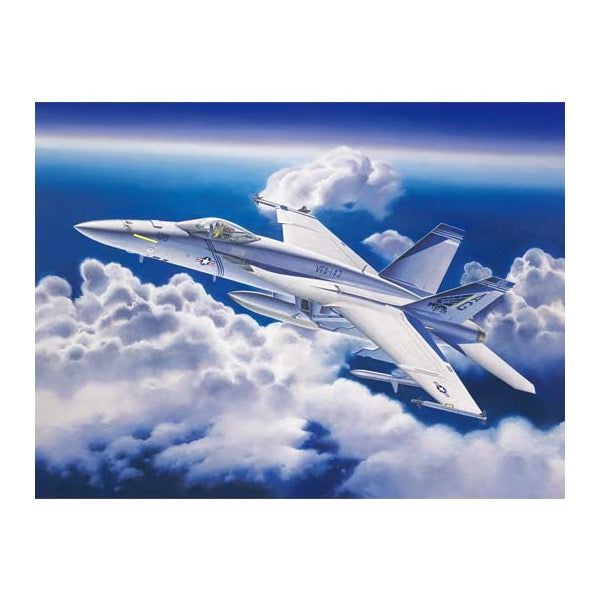
Trumpeter 03204 1/32 F/A-18E Super Hornet
83.00
$
<p>The F/A-18E/F Super Hornet is a larger and more advanced variant of the F/A-18C/D Hornet. An early version was marketed by McDonnell Douglas as Hornet 2000 in the 1980s. The Hornet 2000 concept was an advanced version of the F/A-18 with a larger wing, longer fuselage to carry more fuel and more powerful engines. The F/A-18E/F fuselage was stretched by 860 mm to make room for fuel and future avionics upgrades and increased the wing area by 25%. However, the Super Hornet has 42% fewer structural parts than the original Hornet design. The General Electric F414 engine, developed from the Hornet's F404, has 35% more power. The Super Hornet can return to an aircraft carrier with a larger load of unspent fuel and munitions than the original Hornet. The term for this ability is known as "bringback". Bringback for the Super Hornet is in excess of 9,000 pounds (4,100 kg). The Super Hornet first flew in 1995. Full-rate production began in September 1997. The Super Hornet entered service with the United States Navy in 1999, replacing the F-14 Tomcat since 2006.</p>
<h3>Features</h3>
<p><strong>Fuselage</strong></p>
<ul>
<li>Detailed fuselage with accurate design</li>
<li>Omega shape canopy is 2-directional slide-moulded</li>
</ul>
<p><strong>Wing </strong></p>
<ul>
<li>Optional position flaps</li>
<li>Ple</li>
</ul>
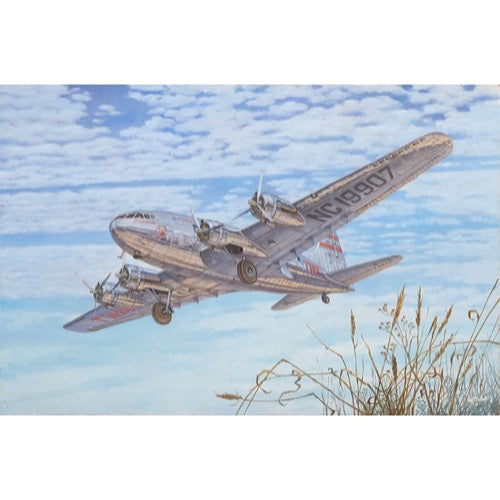
Roden 339 1/144 Boeing 307 Stratoliner TWA SA-307B
16.00
$
<p>In the mid-1930s, in the wake of the rapid growth in passenger air travel, the Boeing Aircraft Company, while busy with the design of a modern four-engine bomber, worked simultaneously on the creation of a new four-engine aircraft, purposed for civil aviation.</p>
<p>Innovative engineering directly affected the design of the aircraft fuselage - for the first time in a machine of this type, a pressurized cabin was utilized, which enabled a significant increase in altitude in flight, allowing greater safety and a minimization of collision with thunderstorms, which flights were affected by at lower levels. The new aircraft, according to designers, could safely fly at an altitude of more than 7,500 meters, where the more dangerous atmospheric phenomena were absent.</p>
<p>The first flight of the aircraft took place on the last day of 1938, but shortly afterwards a catastrophe resulted in the deaths of not only the pilot but also representatives of a potential buyer, KLM, and work on the aircraft's design had to be re-done for safety reasons.</p>
<p>The first customer for the new aircraft was the famous Pan American Airways, which received three machines. Six more were ordered by another well-known airline of the time, Transcontinental and Western Air (TWA), but due to financial disagreements, the transfer of already built airframes was the subject of litigation. The famous aviation enthusiast and billionaire Howard Hughes, who became interested in the promising new airplane, devised an original and easy way out of the situation for himself and others - he bought a controlling stake in Boeing. Five units were completed and handed over to the new owner, while another aircraft was privately owned by Hughes, and named The Flying Penthouse. The type was also named Stratoliner for the first time in the history of American civil aviation. The aircraft was comfortable enough and could carry 33 passengers in a seated position, or 16 in folding comfortable berths during long transcontinental night flights. In addition to the forced ventilation system and the maintenance of normal pressure, the Stratoliner had many other interesting innovations. Considerable attention was paid to the issue of flight comfort, so that even a spacious women's lavatory was installed, with a separate toilet located in it.</p>
<p>The commercial operation of TWA's Stratoliners began in June 1940 (Pan American had started earlier, operating flights from Florida to the Caribbean as well to Mexico and Brazil) from New York to California. Their commercial use continued until the end of 1941, when after the entry of the United States into World War II, all Stratoliners were requisitioned and transferred to the Air Force, designated the C-75. For military service, the pressurized cabin system was dismantled as unnecessary, and the aircraft no longer had such high altitude capabilities as before. But it allowed for the installation of additional fuel tanks, which increased the flight range by 1,600 km. Its combat service was marked by some interesting episodes - for example, the C-75 carried the surviving Doolittle Raid pilots (including James Doolittle himself) from deep continental China to the United States.</p>
<p>After the war, all five machines were demobilized and returned to their original owners, TWA, having previously been upgraded. The upgrade cost TWA a pretty substantial sum of $2 million for the 5 planes, $400,000 for each plane. It is unknown whether TWA would have recovered these funds if it had not been for the unpredictable situation with the newest Lockheed Constellation, the new flagship of TWA, which, after several unfortunate incidents in early 1946, was dropped from flight operations until investigations were completed. At this time, it was the Stratoliners that carried out the major TWA transportation.</p>
<p>The advent of the Douglas DC-4 brought an end to the operation of the Stratoliner by TWA; soon, they were all resold to the French carrier Aigle Azur Transports Aeriens and their subsequent airline service continued mainly in the southeastern colonial possessions of France. Individual aircraft flew until the mid-1970s and were then decommissioned solely for safety and age reasons.</p>
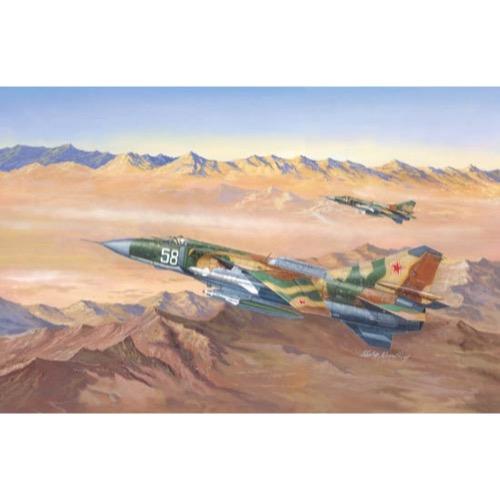
Trumpeter 02856 1/48 Russian MIG-23MLD Flogger-K
30.00
$
<p>The MiG-23 “Flogger” is a high speed swing-wing interceptor with a secondary capability of ground attack. Designed by the Mikoyan-Gurevich bureau in the Soviet Union, development began 1964, with the prototype first flying on 10 June 1967, as it came to light during the Soviet Aviation Day over Domodyedovo Airport, Moscow, 9 July 1967. It was then deployed to the Soviet Air Forces in 1970. Large quantities were exported to countries outside of the Soviet Union.</p>
<ul>
<li>Item No : 02856</li>
<li>Item Name : Russian MIG-23MLD Flogger-K</li>
<li>Bar Code : 9580208028569</li>
<li>Scale : 1:48</li>
<li>Item Type : Static Kit</li>
<li>Model Brief : Length:365.9 mm Wingspan:290.3 mm</li>
<li>Total Parts : 260+</li>
<li>Metal Parts : n/a</li>
<li>Photo Etched Parts : 1 piece</li>
<li>Film Parts : n/a</li>
<li>Resin Parts : n/a</li>
<li>Total Sprues : 17 sprues</li>
<li>Released Date : 2014-07</li>
</ul>
<h3>Features</h3>
<ul>
<li>Detailed fuselage w/accurate design</li>
<li>Canopy made from clear parts</li>
<li>Wing sweep can be varied</li>
<li>Optional position flaps</li>
<li>plenty of external loads</li>
<li>Finely detailed cockpit,gear cabin,</li>
<li>crew seats with photo-etched seat belts and harnesses."</li>
</ul>
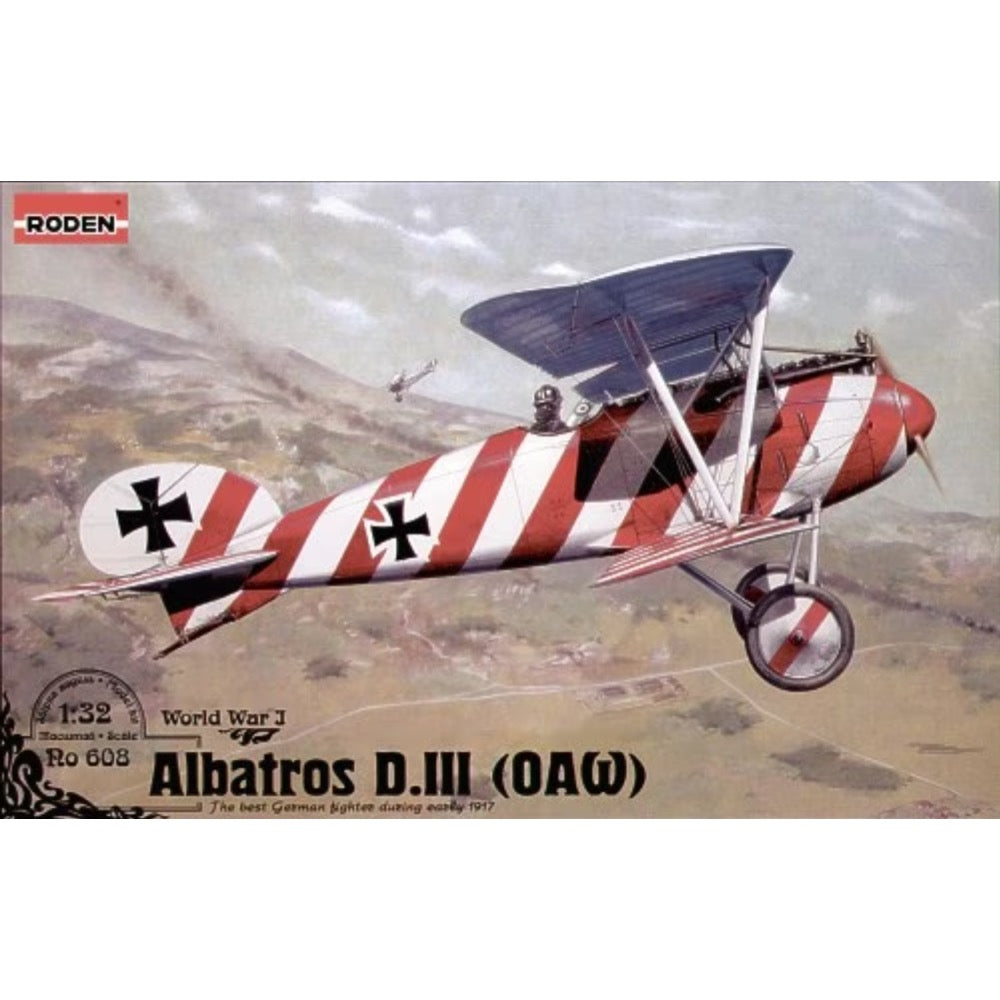
Roden 608 1/32 Albatros D.III OAW
35.00
$
<p>The appearance of the Albatros D.I and D.I² fighters in 1916 was a very important technical breakthrough in the history of the development of German fighter aircraft. English and French pilots now faced a formidable opponent which eliminated their previous advantage in the air. However, the nations of the Triple Entente wasted little time in producing an answer, and the appearance of the neat little Nieuport 11 Bébé in the sky became a real shock for Germans. The Nieuport sesquiplane with its diminutive size and unsurpassed maneuverability compelled the Germans to modify the design of the Albatros D.III in a radical way.</p>
<p>In this fashion one of the finest German developments of the Great War period was born. It was with this type that Germany recovered its superiority in the air in 1917, and Allied pilots now had to take account of a serious and very dangerous opponent.</p>
<p>The speed of development in military aviation was improbably fast in those days. Having only just appeared in any quantity at the Front, the Albatros D.III soon had to give way to its successor from Albatros the new Albatros D.V. At the same time, the previous order for the Albatros D.III had still not been completed, and aircraft were required at the Front in impossibly large quantities. It was decided to pass on the manufacture of the Albatros D.III to the firm's OAW branch in Schneidemühl, thus the main factory in Johannisthal would concentrate on the release of the D.V. In April of 1917 the OAW factory received an initial order for 200 fighters, and eventually over 800 were to be required by the end of that year.</p>
<p>The situation became even more pressured, when early build Albatros D.V machines, soon after delivery to the front, were returned to the factory for the elimination of design faults. The Albatros D.III was the reliable 'workhorse' of the German Army, and its production was constantly increased. In June of 1917 the first licensed machines passed their tests. There was a number of concerns about the machine, however they were insignificant. The final verdict was more than positive: the plane could be passed directly to the Front. German experts, and such as the famous Manfred von Richthofen, declared that in comparison with the Albatros D.V its predecessor was better in many technical respects; and constant problems with wing construction in the D.V constantly sidelined it during the most important moments of the military campaigns of 1917.</p>
<p>Visually, the machines produced by the two different factories (Albatros and OAW) differed only in the shape of the rudder the Albatros machines had straighter lines, as their predecessors had, while the rudder of the OAW machines had a more rounded outline. Another slight difference was in the form of the hood near the armament's recharge mechanism. Some of the machines had their wing radiator shifted from the centerline. Furthermore, an additional wing radiator was fitted to fighters sent to the Front in Mesopotamia and Palestine.</p>
<p>As a whole, the OAW firm built 838 Albatros D.III’s, in comparison with 500 built by Albatros itself. They took part in combat on the Western Front until the final days of WWI. Some of the machines were used in experiments the rocket pioneer Rudolf Nebel experimented with rocket launchers, for the intended interception of British bombers; and there were plans for the use of the D.III as a parasite fighter under huge Zeppelins. The Albatros D.III (OAW) was at war on every front, from France to the Near East, and it figures large in the history of aviation as one of the most successful early fighting aircraft.</p>
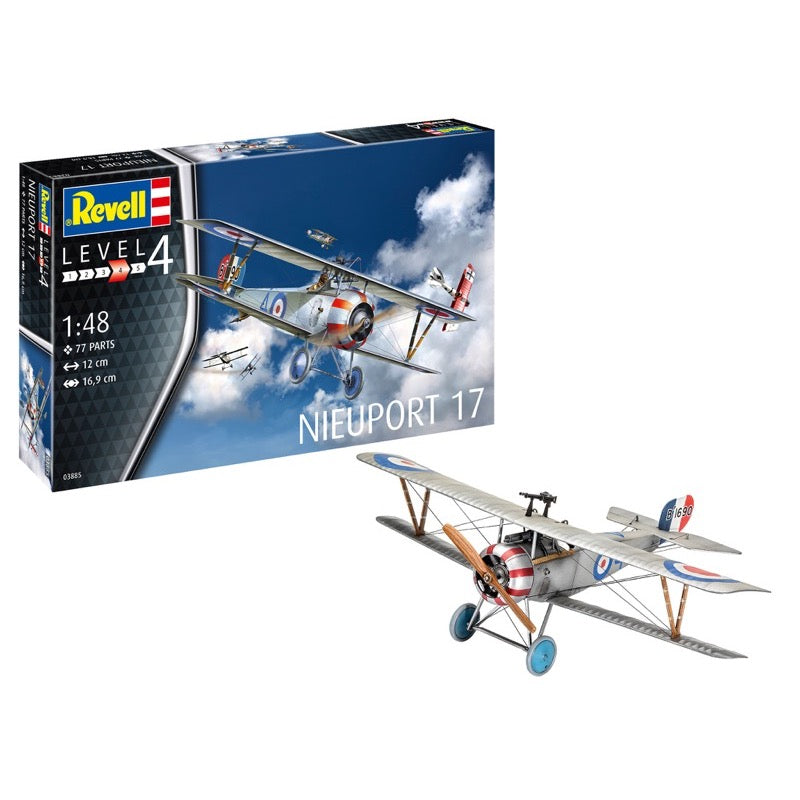
Revell 03885 1/48 Nieuport 17
20.00
$
<p>The Nieuport 17 bi-plane was in its time the most successful French fighter aircraft in the First World War. In addition to the French Air Force, it was also used by the British, the Americans and the Russians.</p>
<ul>
<li>The most successful French fighter plane of its time</li>
<li>Deployed in Great Britain, the USA and Russia as well as in France</li>
</ul>


